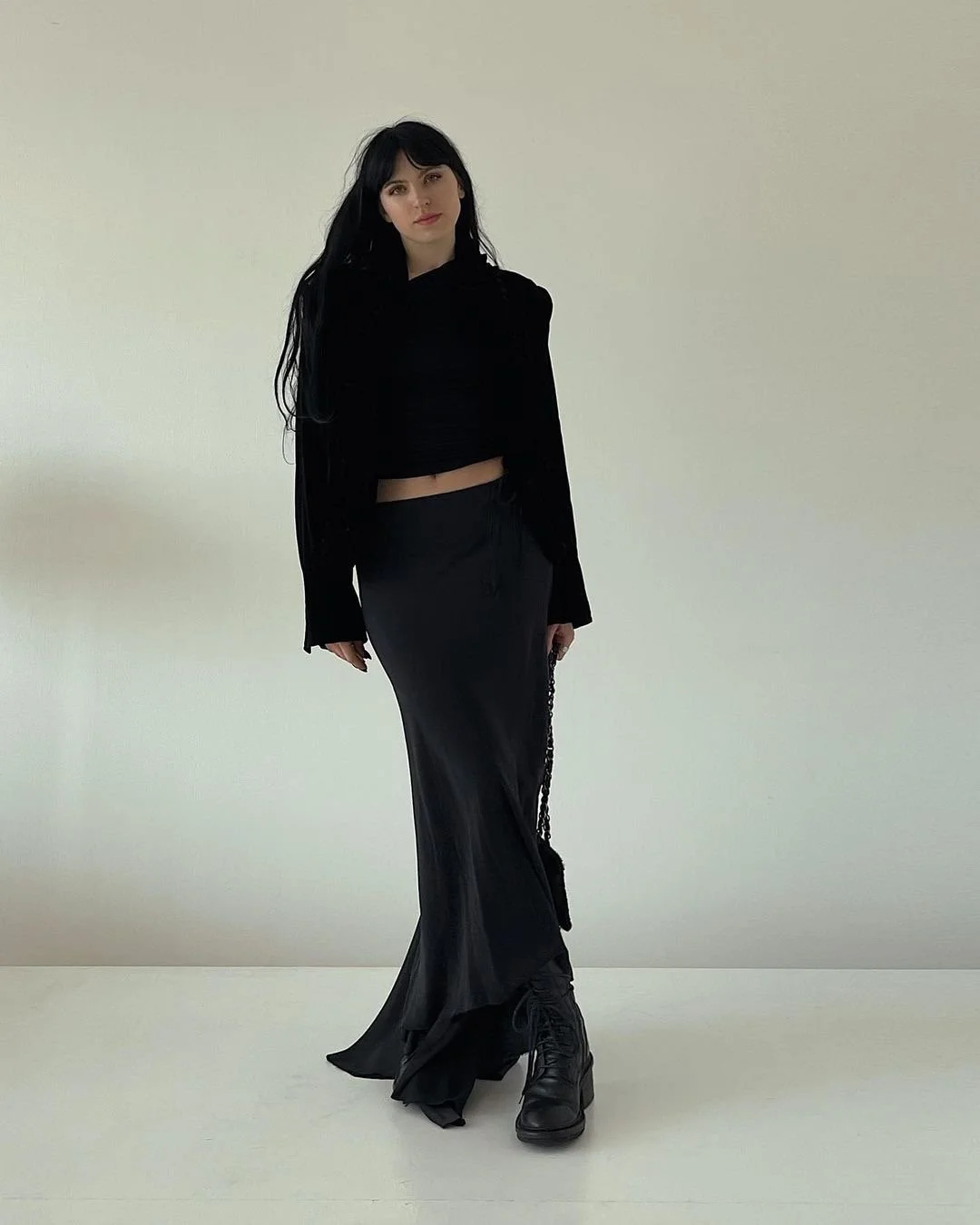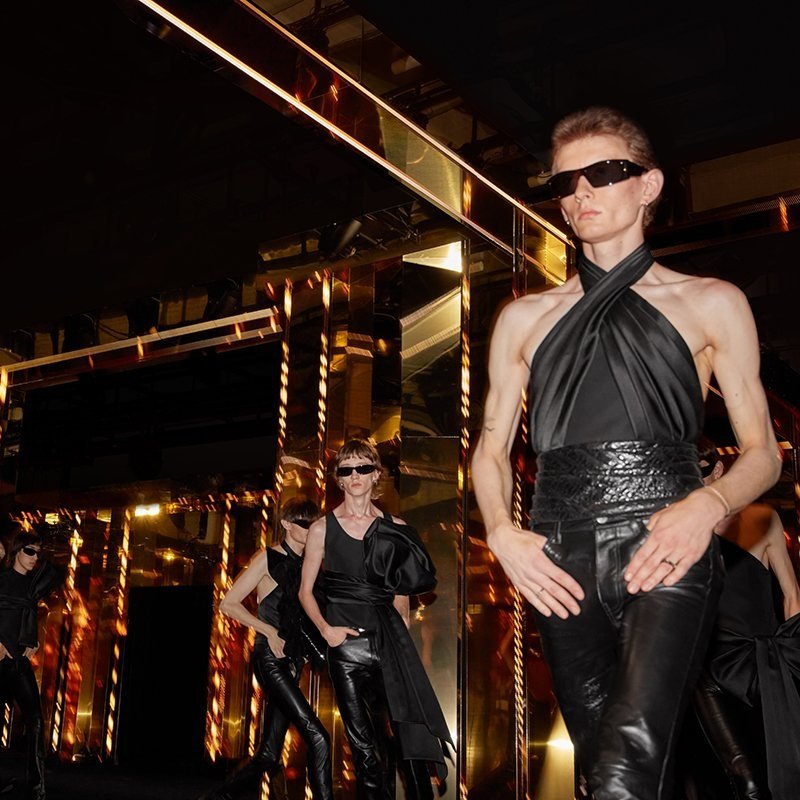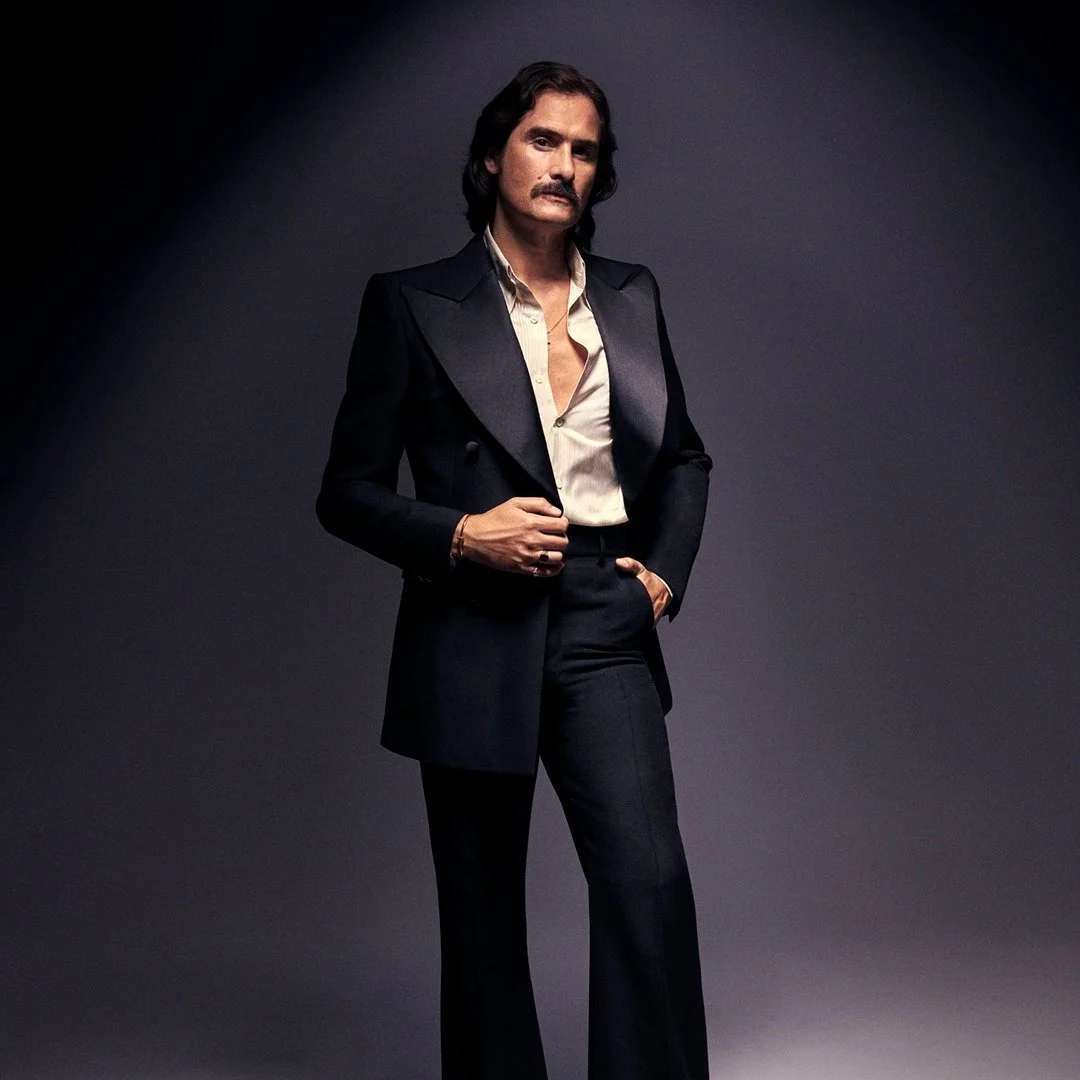Fashion curator Brenda Weischer is disrupting the fashion narrative, by following late designer Virgil Abloh’s advice.
Brenda Weischer is disrupting the fashion narrative big time. The German-born, Berlin-based creative consultant and owner of carefully (and beautifully) curated fashion platform disruptive berlin, has always advocated for the beauty and importance of second-hand fashion. Whilst studying at Central Saint Martins, Brenda interviewed the late fashion designer Virgil Abloh, and her told her one word that stuck with her - disruptive.
Since then, she has been fearlessly committed towards fostering an open, inclusive and special fashion community, which talks honestly about each side of the industry, driving forward new and conscious ways of rebuilding old practices within the space. Opening up to Perfect, Brenda talks about her personal story behind discovering vintage and second-hand fashion as an adolescent, and how Berlin has shaped her into expressing herself – bold, loud and clear.
Angel: How did your passion for vintage fashion come to be? What made you choose to focus on searching for past creations instead of new fashion?
Brenda: I think most second hand shoppers get started for the same reason; passion for clothes with limited funds. I grew up with a single parent, we had very little money in and out of government aid, but I loved fashion from a young age. Back then, it was always a game of not letting anyone find out my clothes were from the charity shops, it was not something you promoted. That changed when I moved to the UK at 16 and found out “thrifting” was actually a cool thing the cool kids did. It completely changed my attitude – and most importantly my confidence. It’s something that has stuck with me forever. Now I am in rooms with the richest people of fashion, and personally have a lot of budget for shopping compared to my teenage self, but I still feel my most confident in my outfits from eBay. So this passion you asked for, is actually my biggest childhood insecurity turned into something positive for me.
Angel: How did the idea behind disruptive berlin come about?
Brenda: For years I was the personal shopper for all of my friends, I am very opinionated and always have a moodboard for everyone. I love the hunt, but when I ran out of money to shop for myself, but not out of clothes to find, I just started doing it for everyone around me. At the same time my Instagram grew and became a business. However, by that point I was almost exclusively wearing second hand, so it was hard to find brands to work with. And I also never wanted to be an influencer. I have had the business name, disruptive berlin, saved even before I had the business idea. I just always knew I wanted to run my own company. In 2016, I interviewed Virgil for my bachelor thesis on the business of hype. He kept using the word “disruptive”. I had no idea what it meant, as English is not my first language, but wrote it down because I liked to sound of it. Later on, when I transcribed the interview, I looked up the word and knew I wanted to use it in the future. Then the actual business idea came during my MA degree at Central Saint Martins. I wanted to create something for the people that don’t have the time, the patience, or the eye to be on eBay page 37, looking for the perfect Mugler blazer. How can I be the personal shopper for everyone?
Angel: Your business operates through fostering a community and your website is only open once a month. What made you adopt this “hidden” structure of curation and offering?
Brenda: This has been copied a lot now, and I am so flattered, but I actually just did this so I didn’t have to update the website constantly [laughs]. If you go on any major e-commerce site, the “new in” products change twice a day. And in retail the sales staff has to rotate the racks daily to keep the returning customers confused and interested. I don’t have the stock to do that. Or the patience. So it was a very simple solution to just hide the shop whenever everything is sold out, or I am too lazy to update anything, or both mostly.
Angel: What does your process or research and sourcing vintage pieces look like?
Brenda: Do you see Coca-Cola giving away their secret ingredient?
Angel: How do you see the future of vintage fashion developing?
Brenda: I think it IS the future. Second hand at least, vintage is obviously 20 years plus, depending on your definition. So I don’t wear a lot of vintage. Right now all brands and stores are scrambling with what to do with their leftover stock. Some still burn it, some sell to YOOX, very few donate. Fact is, there are too many clothes on the market and the average consumer wears a new item sometimes only up to 5 times which is incredibly sad. I think this market is only expanding, there is room for everyone to get involved. It’s a very exciting time.
Angel: Recently you have explored TikTok as a way of educating and showcasing your curation, what is your view on the platform and its relationship with fashion?
Brenda: Kicking myself for joining so late! It’s so fun! People are so interactive, the app doesn’t just benefit the rich and beautiful, at least from what I’ve been seeing everyone can have a shot at a viral moment. I am still figuring things out on there and I think in terms of fashion knowledge and the people that do reviews, there’s a ton of misinformation going around. I have started showing my closet and was expecting the comments to be ruthless honestly. But I think people could tell right away by how I am talking about my clothes, like they’re my babies and that I am actually the biggest nerd, being very appreciative of what I have. So it has been nothing but a positive experience for me so far.
Angel: In your personal style, you wear primarily monochrome. What was the process behind finding your own personal signature in styling?
Brenda: I would say it was a long process of experimentation and I am very glad there was no Instagram when I was 14. My biggest source of inspiration was tumblr, when I was a teenager. And traveling. And also my social environment and music. My first time in Berghain, I was 17 with a fake ID obviously, and I was wearing white Converse with silver studs I did myself, didn’t fit in at all. But I saw the people in there and knew I wanted to be apart of them. I moved to Berlin when I was 19, and I think no place has shaped me as much. And I’ve always been obsessed with furniture and architecture, it all goes hand in hand. So I am mentioning a different factor every sentence but it’s really a combination of all things. And the one thing I have learned is that the people dressed in all black, who look the most unapproachable, are the kindest people at heart.
Angel: What are your goals for the next year, both creatively and personally?
Brenda: The biggest goal was a physical pop-up store with disruptive, which has happened. So I already need to adjust my goals for this year a little bigger and set them higher. I was so incredibly nervous that no one would show, imposter syndrome at its best, and was blown away by the response. So now I obviously tasted blood and want to do it again in the summer, maybe even in a different city. I feel so incredibly privileged to be one of the lucky few who can combine hobby and passion with a career. So, honestly I just want to keep the momentum going. And my only goal for my personal life is that I manage to keep it private!










